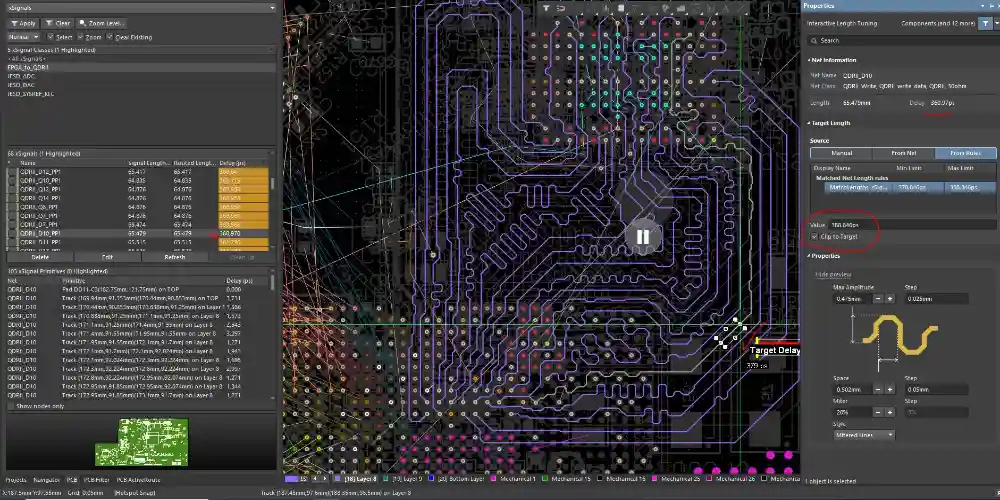
How to Integrate xSignal With Your Workflow
Integrating software features into your workflow requires professional UI/UX design. This includes not only creating the integration itself but also providing an intuitive cross-product experience for your users.
Select the required start pad and end pad (these may be in different nets). Run the xSignal Analyze command or right-click in the Nets mode of the PCB panel and run Create xSignal.
xSignal Analyze
Using the Create xSignals from Selected Pads command in the xSignals panel you can create a single xSignal between two node pads (which may be in different nets if there is a series termination component involved). The xSignal appears in design space as a thin line connecting the node pads.
This mode is best suited for single-ended differential pairs that are connected to the same series termination component at each end. You can use the PCB panel in Nets mode to locate and select the required pads, or right-click a selected pad in the design space to open the xSignals menu and run the command.
This mode uses a more component-oriented approach to identify potential xSignals; you choose the source and destination components, their nets, and any branches from the component to the T-junction, if applicable. The software then analyzes all possible xSignal paths between these components, including those that pass through any series passives, to the T-junction and on to the destination component.
xSignal Routes
The xsignal products Routes region presents the list of identified xSignals that can be routed between the selected source component and target components, passing through series passive components if required. This information is presented in a filtered view of the PCB panel. You can also choose to have the created xSignals associated with an xSignal class – if not specified, the xSignals are automatically added as members of a default xSignal class.
Note that xSignal names are based on the pads (footprint) of the start and end nets, with the resulting xSignal name taking the form StartNet>_EndNet>_PPn>. This is to avoid the need to define xSignals for each individual pad or node.
You can edit xSignal classes using the management buttons in the xSignal Classes region of the panel. In addition, you can create a new xSignal class by right-clicking in this region and selecting Add Class from the context menu. The resulting dialog opens with the new class selected in the list of available classes – this can be edited using the management buttons.
xSignal Classes
An xSignal is a designer-defined signal path between two nodes or pads. These can be two nodes within the same net or two nodes in associated nets separated by a component such as a series termination component. xSignals can be used to scope Length and Matched Length design rules, as well as for interactive length tuning.
When an xSignal is selected in the PCB panel it shows its path on the schematic with a thin line that represents the signal’s routed length. This line includes the xSignal’s Margin, which is the difference between actual signal length and the target signal length defined by applicable Length/Matched Length design rules. It also includes the total Pin Package Length for all the pads in that xSignal and the vertical distance traversed through vias.
The Create xSignals Between Components command is available in the PCB panel in xSignal mode, and provides an easy way to create a single xSignal between one source component and one destination component. The dialog opens with the required components pre-selected – select or adjust as necessary. The Create xSignals Between Components dialog allows you to assign an xSignal class if desired – choose an existing class or enter a name for a new class.
xSignal Rules
The xSignal panel’s first region shows the xSignal path that the software assumes a routed signal will take. The path follows the routing topology of the net it identifies (in this example the default topology is Shortest).
To create a new xSignal, select the required start and end pads in the PCB panel. You can either use the Design >> xSignals sub-menu or right-click on one of the selected pads.
When the xSignal Creation dialog opens you can choose an existing class for the resulting xSignals, or enter a name to create a new class. Either way, all xSignals created will be associated with the selected class when they are identified at the bottom of the dialog.
An xSignal is a designer-defined path between two nodes, which can be two nodes in the same net or two nodes in associated nets separated by a component. When an xSignal is created, the software scopes relevant design rules such as Length and Matched Length for that xSignal.